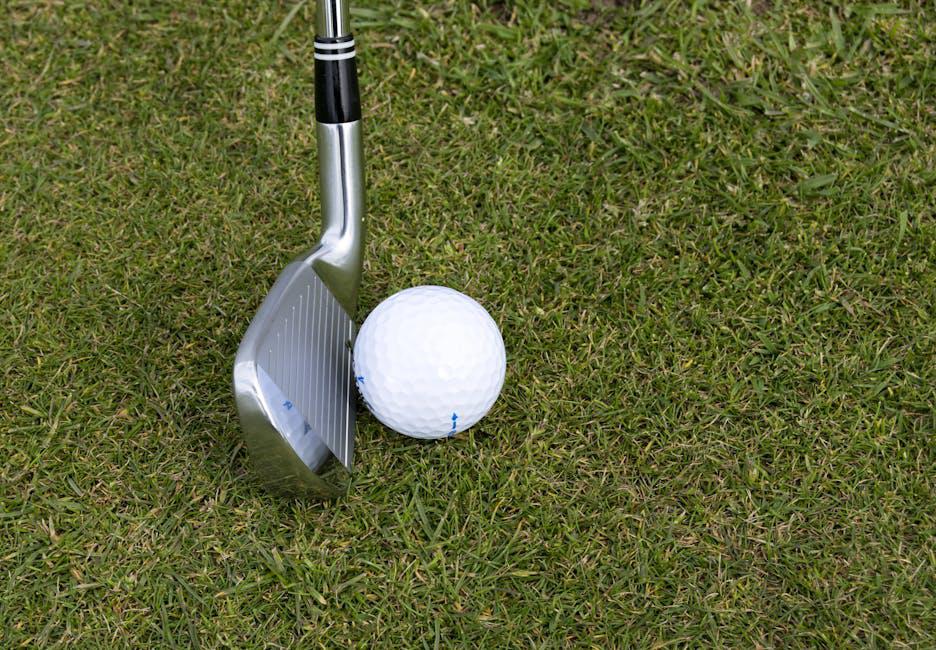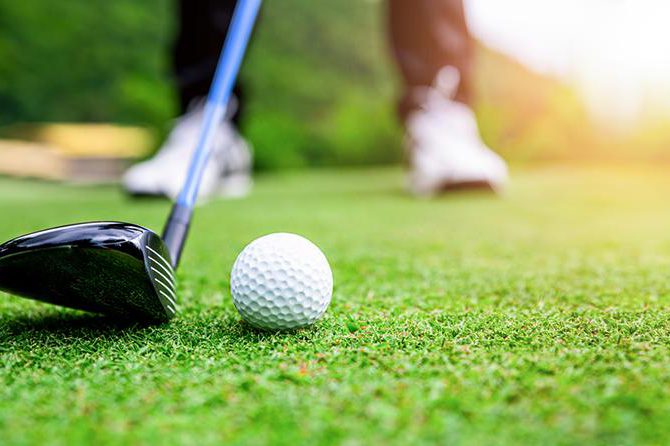– Physical Optimization for Enhanced Swing Mechanics
Physical Optimization for Enhanced Swing Mechanics
A comprehensive physical optimization plan can significantly improve your golf swing mechanics. Here are a few key considerations:
-
Flexibility and Range of Motion:
Maintaining optimal flexibility and range of motion in your joints and muscles enhances your swing’s fluidity and power. Regular stretching and dynamic movements can improve your shoulder rotation, hip mobility, and spine flexibility, leading to a more consistent and powerful swing.
-
Strength and Power:
Developing strength and power throughout your body, especially in your core, legs, and upper body, enables you to swing with greater speed and control. Incorporate strength training exercises like squats, lunges, and resistance band training into your fitness routine.
-
Stability and Balance:
Improved stability and balance promote a solid foundation for your golf swing. Core exercises, such as planks, crunches, and yoga poses, strengthen your core muscles, stabilizing your swing and limiting excessive lateral movement. Additionally, proprioception exercises enhance your body awareness, improving your balance and overall swing mechanics.
– Mental Fortitude and Emotional Resilience in Golf
Mental Fortitude and Emotional Resilience in Golf
Building mental fortitude and emotional resilience is essential for success in golf. Golf is a challenging game that requires players to be able to stay focused, cope with setbacks, and perform under pressure. Players who are mentally tough and emotionally resilient are more likely to achieve their goals and reach their full potential.
There are a number of things that golfers can do to build their mental fortitude and emotional resilience.
- Practice mindfulness. Mindfulness is the practice of paying attention to the present moment without judgment. This can help golfers stay focused and reduce their stress levels.
- Set realistic goals. Setting realistic goals can help golfers stay motivated and avoid disappointment.
- Learn from your mistakes. Everyone makes mistakes, but the important thing is to learn from them and move on.
- Positive self-talk. Positive self-talk can help golfers build their confidence and stay focused.
- Visualize success. Visualizing success can help golfers build their confidence and prepare for upcoming challenges.
Mental Fortitude and Emotional Resilience Skills & Strategies:
| Skills | Strategies |
| —- | —- |
| Concentration | Practice mindfulness, breathing exercises, and set realistic goals. |
| Self-confidence | Positive self-talk, visualization, and past success record. |
| Emotional Control | Learn stress management techniques. |
| Resilience | Learn from mistakes, set realistic goals, and practice positive self-talk. |
– Strategies for Course Management and Hole Selection
Strategies for Course Management and Hole Selection
Course management and hole selection are vital aspects of golf that can profoundly impact your performance on the green. A well-thought-out strategy can optimize your stroke count, improve your accuracy, and ultimately lead to lower scores. Understanding the principles of course management and mastering the art of hole selection empower you to make informed decisions and execute shots with greater confidence.
Consider the Course Layout and Conditions
Before embarking on any course, it’s imperative to familiarize yourself with its layout, hazards, and greens. Study the course map and note the distances, slopes, and contours of each hole. Assess prevailing wind conditions, as they can significantly influence club selection and shot trajectory. Identify potential hazards and safe areas to plan your approach accordingly. By understanding the characteristics of the course, you can formulate a strategy that maximizes your strengths and minimizes your weaknesses.
Analyze the Pin Position and Hole Difficulty
Selecting the appropriate hole for each shot is critical for success. Consult the course pin sheets or observe other players’ shot selections to determine the ideal landing zones and hole locations. Consider the distance to the pin, the angle of the green, and the surrounding hazards. Evaluate the difficulty of the hole, taking into account the length, slope, and green features. Make adjustments to your shot selection and club choice based on the specific hole conditions and your skill level.
– Mastering Different Club Performance and Shot Execution
– Mastering Different Club Performance and Shot Execution
When it comes to mastering different club performance and shot execution, there are a few key things to keep in mind:
- Knowing Your Clubs: What loft are they? How far do they go? What trajectory do they produce? It’s important to become familiar with the strengths and weaknesses of each club in your bag. Here is a quick cheat sheet to help you become more familiar with some of the most commonly used clubs:
| Club | Loft | Distance | Trajectory |
|---|---|---|---|
| Driver | 8-12 degrees | 250-300 yards | High |
| Fairway wood | 13-20 degrees | 200-250 yards | Mid |
| Hybrid | 19-25 degrees | 175-225 yards | Mid-low |
| Iron | 25-45 degrees | 150-200 yards | Low |
| Wedge | 45-60 degrees | 100-150 yards | High |
| Putter | 0 degrees | 0-50 yards | Flat |
-
Learn Proper Swing Mechanics: Both the golf swing and clubface need to work in unison in order to execute the perfect shot. The golf swing requires a series of precise movements, from the start of your backswing to the follow-through. Here are a few key swing mechanics to keep in mind:
-
Grip: The way you hold the club can impact the trajectory and accuracy of your shot. There are three main types of grips: the interlocking grip, the overlapping grip, and the baseball grip. Experiment with each type of grip to see what feels most comfortable and consistent for you.
-
Stance: Your stance is the foundation of your golf swing. It affects your balance, power, and accuracy. There are two main types of stances: the square stance and the open stance. The square stance is the most common and is suitable for most golfers. The open stance is used to promote a draw or fade shot.
-
Backswing: The backswing is the first part of the golf swing. It is important to take the club back slowly and smoothly, while keeping your head down and your eyes focused on the ball.
-
Downswing: The downswing is the second part of the golf swing. It is important to start the downswing by shifting your weight to your left foot and rotating your hips. Keep your head down and follow through with your swing.
-
Putting It All Together: Once you have a good understanding of your clubs and swing mechanics, it’s time to start putting it all together. The best way to improve your shot execution is to practice regularly. Find a driving range or golf course where you can practice hitting different clubs and shots. The more you practice, the more consistent your swing will become and the more accurate your shots will be.
– Recovery Techniques and Obstacle Navigation
Recovery Techniques and Obstacle Navigation
Physical recovery is crucial for maintaining optimal performance on the golf course. Incorporate stretching, foam rolling, and massage into your routine to alleviate muscle soreness and improve flexibility. Prioritize rest and hydration to promote muscle recovery and reduce fatigue.
When faced with obstacles on the course, such as trees, bunkers, or water hazards, employ strategic thinking to navigate them effectively. Consider the distance, angle, and potential hazards. Use your imagination and creativity to visualize different shot options and determine the most favorable path to the green.
Obstacle Navigation Strategies
| Obstacle | Strategy |
|---|---|
| Trees | Punch shots, cut shots, or draw shots |
| Bunkers | Green-side bunker shots, deep sand shots |
| Water hazards | Lay-up shots, punch shots, or carry shots |








